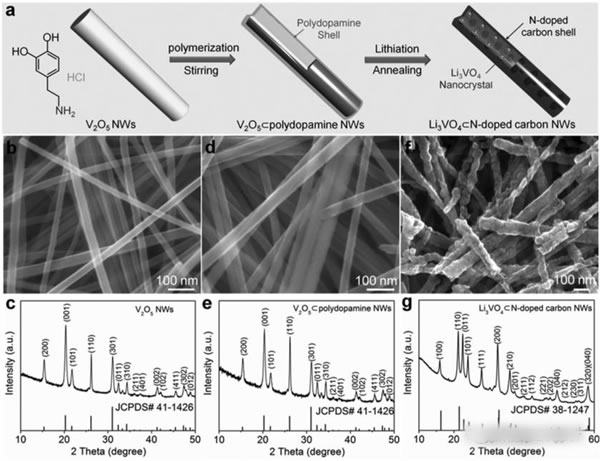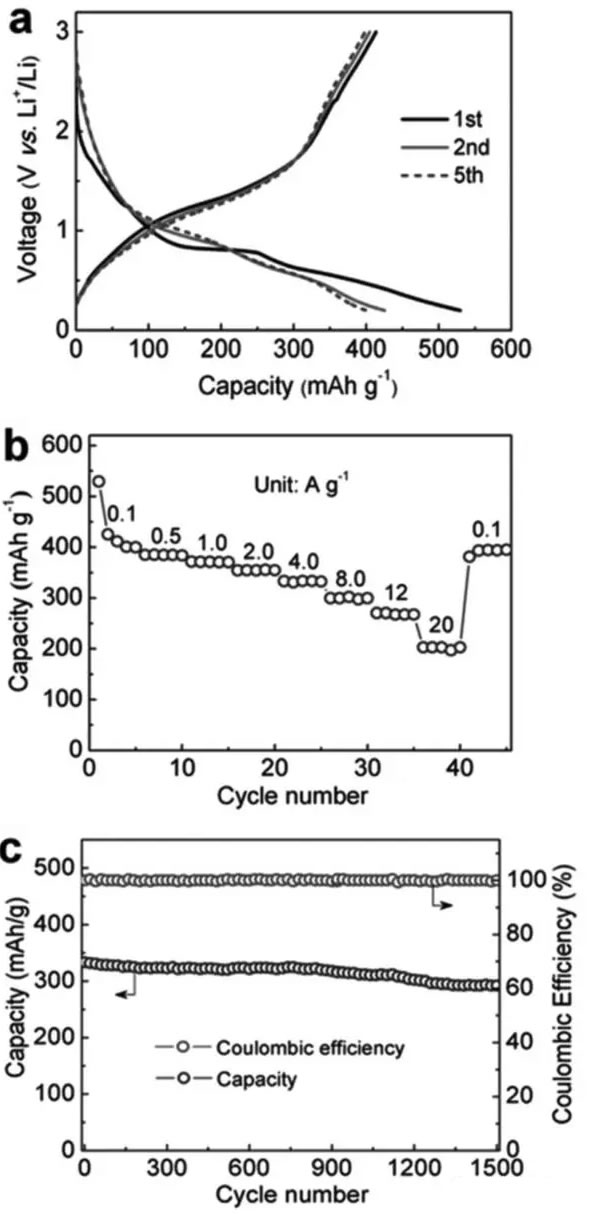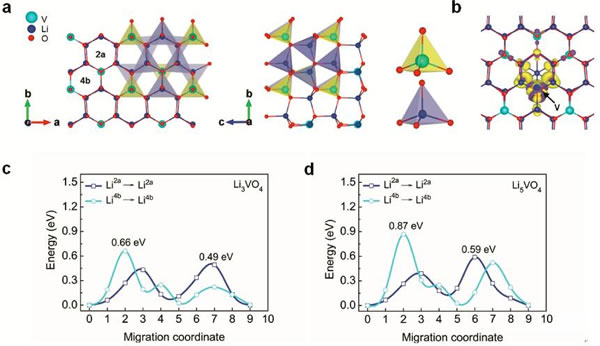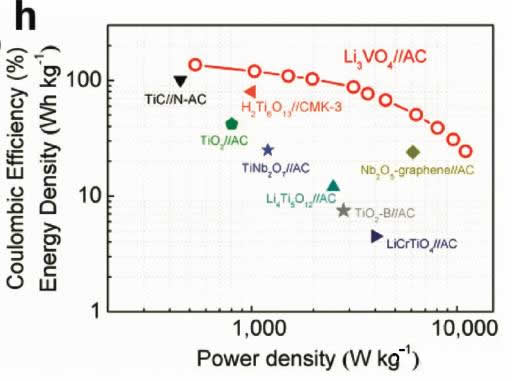
Privacy statement: Your privacy is very important to Us. Our company promises not to disclose your personal information to any external company with out your explicit permission.
Supercapacitors are emerging energy storage components in recent years. Their outstanding features are high power density and long cycle life, but their energy density is very low (less than 10Wh/kg), and lithium ion batteries have high energy density (over 200Wh/kg). ), but the power performance is poor, and the cycle performance is not as good as a super capacitor. In the field of electric vehicles we need both high energy density (longer cruising range), high power density (faster charging speed), and longer cycle life (longer battery life), so a combination Energy storage components with the advantages of supercapacitors and lithium-ion batteries have emerged: lithium-ion capacitors. In general, a lithium ion capacitor is composed of a positive electrode of a super capacitor and a negative electrode of a lithium ion battery, and the electrodes on both sides comply with respective working principles, thereby achieving the purpose of greatly increasing the energy density and power density of the capacitor.
Recently, China University of Science and Technology, Chinese Academy of Sciences and Germany's Max Planck Solid Research Institute jointly developed a high-energy lithium-ion battery container based on Li3VO4/N-doped graphite nanowires. With a power density of 532 W/kg, the capacitor has a high energy density. 136.4Wh/kg, the results have been published in the latest issue of advanced material.

Compared with Li4Ti5O12, TiO2, H2Ti6O13 and other materials, Li3VO4 material has the characteristics of low insertion voltage (0.2-1.0V), high capacity (394mAh/g), and advantages of small changes in structure and volume during charge and discharge. This makes it very suitable as a lithium ion capacitor anode material, but the conductivity of Li3VO4 material is very low (<10-10S/cm), which also greatly limits the rate of Li + intercalation reaction, limiting the lithium ion capacitor The power density. Carbon coating and nanocrystallization are commonly used methods to improve the conductivity of materials. In order to improve the conductivity of Li3VO4 material, Liifa Shen synthesized Li3VO4/N-doped graphite composite nanowires with pea pod structure using the method shown in the above figure. This structure overcomes the disadvantage of low conductivity of Li3VO4 material. With high Li+ and electron diffusion rates. With this material as the negative electrode, the carbon material is a positive electrode combined to become a lithium ion capacitor, and the specific energy can reach 136.4 Wh/kg (at a power density of 532 W/kg).
The lithium insertion reaction equation of Li3VO4 material is shown in the figure below. In the cyclic voltammetry test, the reduction current peaks appear at 0.73V and 0.53V, respectively, and the oxidation current peaks appear at 0.76V and 1.34V, respectively. It is worth noting that except for the first cycle, the curves of the other several cycles overlap completely.

The electrochemical performance test results of the Li3VO4 material are shown in the figure below. The charge and discharge curve is shown in Figure a. The initial discharge capacity and charge capacity are 529mAh/g and 413mAh/g, respectively. Figure b shows the rate performance test. You can see from the test results. At a current density of 1, 2, 4 and 8 A/g, the capacity of the material can reach 372, 354, 333 and 300 mAh/g. At a high current density of 12 and 20 A/g, the discharge capacity of the material remains Up to 271 and 203 mAh/g, indicating that the material has very good rate performance. From the cycle performance of Figure c, we can see that the material has very good cycle performance. Under the current density of 320mAh/g, the capacity retention rate of the cycle 500 times can reach 96%, and the capacity retention rate of the cycle 1500 times can reach 88%.

Laifa Shen believes that the excellent electrochemical performance of Li3VO4/N-doped graphite composite nanowires may benefit from its unique structure. The internal N-doped graphite forms a very good electronically conductive network inside the material, and the externally coated graphite The material can well inhibit the agglomeration and growth of the Li3VO4 material and maintain its nanostructure, thus greatly reducing the diffusion distance of Li+ and e-, thereby improving the material's rate performance and cycle life.
According to the first-degree calculations, LaifaShen believes that in Li3VO4 crystals, Li+ can be embedded in the 2a and 4b sites, but is more inclined to the 2a site. The potential barriers for Li+ diffusion to the 2a and 4b sites are shown in Figures c and d. It can be seen that the barrier to Li+ entry to 2a is significantly lower than the diffusion to 4b, while we also follow the material As the Li+ concentration increases, the barrier to Li+ diffusion also increases. Calculations also show that even if two Li+s are embedded in each cell of the Li3VO4 crystal, the volumetric expansion is only 4%, which also ensures the good cycling performance of the Li3VO4 material.

Lithium ion capacitors made of Li3VO4 material are shown in the figure below. The positive electrode is activated carbon and the negative electrode is Li3VO4 material. The working voltage of this capacitor is up to 4.2V. When the charging voltage is increased from 3.0V to 4.0V, the specific energy of the capacitor can be increased from 25.5Wh/kg to 120.2Wh/kg, and the energy density can be increased by as much as 470%.

The relationship between the power density and the energy density of the capacitor is shown in the figure below. With a power density of 532 W/kg, the energy density can reach 136.4 Wh/kg. Even at a power density of 11020 W/kg, the specific energy can still reach 24.4 Wh. /kg, which is much higher than other types of lithium ion capacitors.

The relationship between the power density and the energy density of the capacitor is shown in the figure below. With a power density of 532 W/kg, the energy density can reach 136.4 Wh/kg. Even at a power density of 11020 W/kg, the specific energy can still reach 24.4 Wh. /kg, which is much higher than other types of lithium ion capacitors.
August 14, 2024
Envoyer à ce fournisseur
August 14, 2024
June 17, 2024
November 03, 2023

Privacy statement: Your privacy is very important to Us. Our company promises not to disclose your personal information to any external company with out your explicit permission.

Fill in more information so that we can get in touch with you faster
Privacy statement: Your privacy is very important to Us. Our company promises not to disclose your personal information to any external company with out your explicit permission.